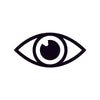OPTICAL COHERENCE TOMOGRAPHY (OCT)
Optical coherence tomography or otherwise known as an OCT is a non-invasive scan that constructs a 3d image of the back of your eyes. The OCT allows 1001 Optometry optometrists to detect eye conditions and diseases in the back of the eye at its earliest stages to provide a more advanced and accurate examination of your eye health. These scans are important as some eye conditions such as Macular degeneration, Diabetic retinopathy and Glaucoma can silently progress without you even knowing about them being there!
How does optical coherence tomography (OCT) work?
The OCT is a painless, non-invasive (no physical contact) machine that takes less than 2 minutes for both eyes to be scanned. The results produce a high resolution picture of the back of your eyes and also a cross sectional 3D view of the layers behind the eye. Our optometrist can then show you these results, explain the findings within your consultation and store them in our database for future monitoring by comparing today’s result with previous ones.


